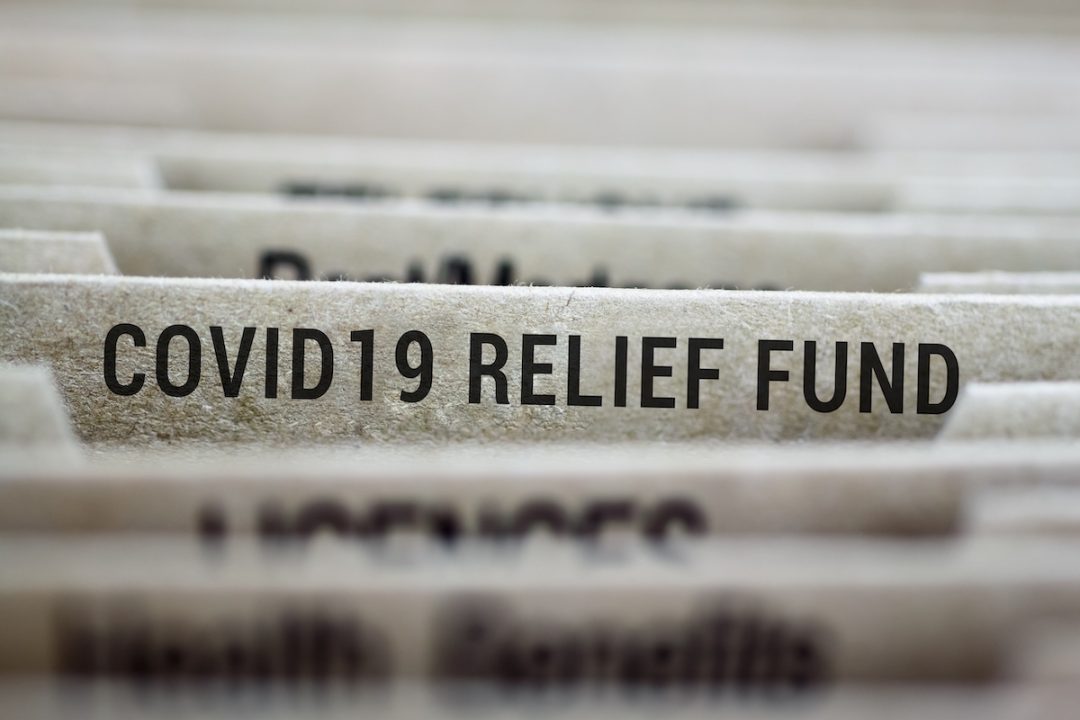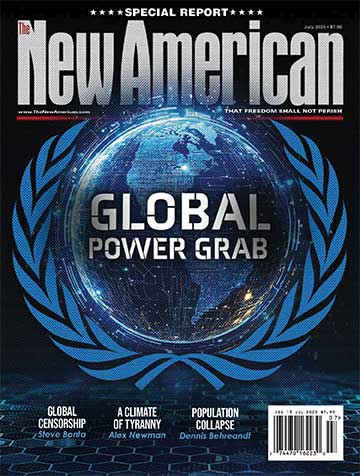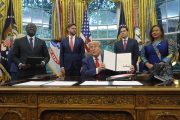
The federal government paid $79 billion in Covid-19 relief to individuals who likely used phony or stolen Social Security numbers (SSNs), according to a recent report from the Pandemic Response Accountability Committee (PRAC).
Under the Coronavirus Aid, Relief, and Economic Security (CARES) Act of 2020 and subsequent legislation, Uncle Sam shelled out $5 trillion to counteract the economic damage wreaked by federal, state, and local policies that shuttered businesses and put millions out of work.
Among the largest pandemic-relief programs were the Small Business Administration’s (SBA) COVID-19 Economic Injury Disaster Loan (COVID-19 EIDL) program and Paycheck Protection Program (PPP), and the Department of Labor’s (DOL) pandemic Unemployment Insurance (UI) programs. Those programs accounted for an estimated $400 billion worth of fraud, according to 2023 reports from the SBA’s and DOL’s inspectors general.
Mistaken Identities
PRAC decided to investigate how much of that $400 billion could have been saved had the agencies bothered to verify the identities of applicants before showering them with taxpayer dollars. The committee’s answer: $79 billion — and possibly much more. Reads PRAC’s report:
When program guardrails were removed during the pandemic, a substantial amount of funds were rapidly disbursed without proper identity verification.
PRAC submitted a sample of 662,000 identity records from the programs’ 67.5 million funded applications to the Social Security Administration (SSA), asking the agency to report on whether each applicant’s name and date of birth (DOB), where provided, corresponded to his claimed SSN. PRAC also wanted to know whether the SSN holder was deceased.
Of those 662,000 records, 23,854 (3.6 percent) were regarded as questionable based on the SSA’s findings. About 2,100 SSNs were invalid; 2,800 had incorrect birth dates; and 19,000 had the wrong names. The non-matching birth dates and names suggest that many applicants engaged in “synthetic identity fraud” by combining valid SSNs with fabricated details.
As to how many deceased individuals — or others using their identities — collected loot under these programs, PRAC was at a loss to say. SSA told PRAC that 11,514 of the 638,146 identities it could fully confirm belonged to individuals who were deceased at the time it responded to PRAC’s request. But it could not legally provide their death dates to PRAC, so the committee could not determine whether they were deceased at the time they submitted their applications. (It may do so later using Treasury Department data.)
Using a statistical sampling method, PRAC estimated that “1.4 to 1.5 million potentially stolen or invalid SSNs were used to obtain benefits from the programs.” COVID-19 EIDL disbursed an estimated $55.8 billion to individuals with unverifiable identities. PPP and pandemic UI programs did likewise, to the tune of $13.8 billion and $9.8 billion, respectively.
PRACtical Advice
The actual total of fraudulent payouts may be well over $79 billion, however. Since the SBA did not require applicants to supply their DOB, 87 percent of the PPP records sampled by PRAC did not include one. The committee noted that records including a DOB were found to be invalid more often than those without. Thus:
Had the SBA required PPP applicants provide DOB information in the PPP application, as COVID-19 EIDL and Pandemic UI programs did, we would expect to have identified even more potentially stolen or invalid SSNs, as well as higher potentially fraudulent payment amounts in our PPP estimates, because there would have been one more data point (i.e., DOB) to check against SSA’s records.
PRAC urged federal agencies to require applicants to include their DOB. It also strongly encouraged them to work with SSA now to ensure they can verify applicants’ identities in the future.
In a June 4 press release, PRAC Chairman Michael Horowitz said:
Our oversight work during the past five years has detailed federal agencies’ inability to use data to effectively prevent pandemic-related fraud. By contrast, the PRAC’s sophisticated data analytics capabilities allow us to look across federal agencies and programs to identify potential fraud before it occurs by comparing agency and other data with applicant-provided information, such as IP addresses, dates of birth, bank accounts, and home addresses. As today’s report demonstrates, this data analytics capability can strengthen program integrity and prevent billions of dollars in fraud, ensuring taxpayer funds are paid to legitimate applicants.
Who CARES?
That assumes, of course, that politicians actually give a fig about spending other people’s money responsibly. Their response to concerns about foreseeable CARES Act fraud is a pretty good indication that they don’t.
“Some people did raise the potential for fraud [in 2020]. We were told that there was no time to put in place measures sufficient to prevent it,” observed columnist Veronique de Rugy. PRAC, created to give the act a veneer of accountability,
had a difficult task due to the enormous size of the relief bill, a hardship compounded by the fact that the program had to become functional before it could even start looking into the spending. Dollars were pouring forth fast from Washington, and the committee was basically behind from the start.
PRAC couldn’t prevent any fraud, but it has issued several reports detailing how the fraud occurred and how it could have been prevented.
As with most such reports, though, PRAC’s are unlikely to make much difference. When it comes to unconstitutional giveaway programs, wrote de Rugy, “It’s easier [for Congress] to complain about fraudsters than to acknowledge that the real scam is the entire process — a process that starts on Capitol Hill.”




